Note
Is there a profession that's obviously fantasy but they would be removed enough from magic to still be intrigued by it? I'm a writing a short story and my beta reader noted that the setting doesn't come off as magical until later on. So I wanted to drop sort of a hint in the beginning, and that way I don't have to rewrite too much, by referencing her profession.
Hmm... Making them a tamer or keeper for some kind of mythical creature is a really easy one but also extremely on the nose.
You may want to include some one off mentions of magic existing. If it's a Magical Setting, it being so probably affects the day to day lives of its people. And if that's not the case, maybe it not feeling magical at first is part of the story and the setting.
Going deeper than that would beg for some further knowledge on how exactly this setting works.
1 note
·
View note
Note
So I'm trying to create a magic system where people must learn it, not be born with it. I'm also attempting to make it challenging enough that not everyone chooses to study it. I've considered creating a rune magic system, but I'm concerned about how it could easily be commodified in world, which I want to avoid. Like, you carve a light rune and you have an instant lamp. While the existence of magic is public knowledge, I still want there to be a bit of a divide like in fullmetal alchemist or chainsaw man.
Okay this is a fun one.
In absence of a mechanical deterrent for the democratization of magic, you can pick from a few other options:
Cultural Deterrents - magic can be restricted culturally. Maybe there are religious restrictions on its use. It could be seen as corrupting or as foreign or simply undesirable. Most people find its use distasteful, and those who do use it are outcast.
Socio-Economic Deterrents - magic could be something held by the upper class, placed behind a barrier of education, monetary cost, and social dances so that the masses cannot access it.
Material Deterrents - what if you needed a special knife to carve runes or it didn't work and the blade had to be made a super specific way and most people just don't fucking bother. "I know how to draw all the runes yeah, but you gotta do it on the fancy paper and if you get it even a little wrong it backfires. Way easier to just light candles myself."
Probably More - this is just what came to mind off the top of my head as possibilities.
People will find a way to use every single resource they can get their hands on given the time. Magic is no exception. If you build it, they will come. Just gotta bend things around to work for you.
4 notes
·
View notes
Text
25 notes
·
View notes
Text
Did I skip part 5? Yes. Am I letting that get me down? No.
I never claimed to know how to count.
1 note
·
View note
Text
Magical Ecology Part 6/6
(okay last one)
Whenever one form of regulation is not enough, the others kick in to cover the deficit and keep the system in balance.
As stated before, the balance is strongly affected by the death rate in a given area. Because of this, the foreground field is usually stronger in the summer and weaker in the winter, meaning the birth rate of casters tends to be slightly in early autumn, and spirits are most likely to be born in early spring.
This also means that trends in the development of societies can cause fluctuations in the field's balance:
Early civilizations are often slow to Maericize unless under extreme conditions. Casting tradition in people often begins with nomadic cultures travelling through magically charged areas regularly and spreading the practice to others they meet.
As industrialization spreads, life expectancies rise, and death rates fall, the casting population often swells and the chances of cataclysm grow.
Post industrial societies with falling birthrates will often see a drop off in the practice of magic or a rise in the spirit population to account for the change.
Large scale disasters which cause widespread death can trigger the birth of a spirit by dropping the foreground field low very quickly. Cataclysms especially are recorded as doing this since they expend the field without adding back to it.
4 notes
·
View notes
Text
Magical Ecology Part 5
While an overabundance of foreground magic can cause many problems, the opposite case, in which there is none, can be devestating to a populated environment. With no foreground from which to pull new souls, the growth of new life slows and falters.
These cases are rare, and usually occur in the wake of a booming caster population growing overzealous in their slinging of spells. When this occurs, a population may respond by Miirnicizing.
Like casters, Miirn, or Spirits, have partially soft souls which allow magic to be sensed and drawn. Unlike Maerics, they draw in the opposite direction. Spirits passively pull magic from the background and into the foreground. They do not cast naturally, but, like all creatures, are capable of learning to do so.
Again, this trait is non hereditary, but can be predicted by species. This is called Type Two Magical Affinity. In this case, some plant life takes the lead above animals, but 2MA is rather even across the board.
This leaves us with a Redundantly Balanced Ecology. In our environment, we will find some amount of activity which fuels the foreground field, and some amount of life which fuels the background.
Some amount of that life (> 10%) will be casters who will introduce spell casting to the remaining population, further pushing the background.
A tiny portion of the population (>> 0.1%) will be spirits who will pad out fluctuations in the casting population. Any eccentricities are covered by saturation and shock discharges.
This ensures on three fronts that neither foreground nor background grows too strong.
3 notes
·
View notes
Text
Magical Ecology Part 4
Saturation discharges are often messy and sometimes violent, but usually only occur in sparsely inhabited or entirely barren areas. In places where there is an abundance of life, but that life still fails to keep up with the growth of the foreground field, part of that population may Maericize.
Up to here, all souls discussed have been Maunic. Their only purpose is to facilitate life, and discharge at death. Because of this, they are rather simply built, and, most importantly Hardened. No magic can come in or go out of the soul at any time. This makes their possessors Mundanes.
When a population Maericizes, a few individuals are born with Soft souls which allow magic to pass in and out. Maeric creatures are called Casters, and their more open souls allow them to sense the foreground field and to use it for intentional spell casting, which returns magic to the background field at a vastly accelerated rate.
Casters manipulate magic by natural instinct and often pass on casting tradition to their mundane peers. Over time, the Maeric population will rise until a balance is struck with the surrounding environment.
Maericism is non hereditary and can occur in any living creature in an environment, but some species are more likely to take it on than others. This is called Type One Magical Affinity. Animals tend to have higher affinities than plants and complex organisms tend to have higher chances, generally speaking.
8 notes
·
View notes
Text
Magical Ecology Part 3
When the foreground field grows too quickly for the cycle of life to keep up, there are a number of other ways to discharge the excess and restore balance.
One is through Saturation Discharge. Objects have a maximum capacity of magic they can hold at once called Depth. When depth is exceeded, the excess is passed on to neighbors, but if there is nowhere to go, it is forced to discharge with the biproduct of some spell effect. Over an entire environment, this is called a Field Effect which can change weather patterns, affect creature behavior, etc.
Souls operate on a full discharge which occurs when a filled reserve experiences sudden shock. This can occur in other places as well when the foreground field grows too strong, producing a spontaneous spell effect.
In very rare cases, an entire environment can fully discharge at once creating a Domanic Cataclysm. This usually happens in response to a natural disaster of some kind, and results in dramatically increasing the severity of said event.
3 notes
·
View notes
Text
Magical Ecology Part 2
Life is the magical environment's way of regulating itself. Souls are spun from the foreground field at birth and return to the background at death, but remain as part of the Foreground so long as the creature they are attached to is alive.
Souls also play a secondary role as a part of the body. The soul, as companion to the mind, helps store vital information and carry signals for bodily function. The amount of magic each creature pulls varies, but is roughly proportional to the complexity of the body and the mind.
This is to say that the magical ecology (at this point) not only relies on the death rate of creatures within it to balance, but generally relies on the death rates of its more complex creatures.
Meanwhile, the amount of foreground magic generated by a given action is proportional to the strength and gravity of the action. A thunderstorm will leave a significant field of magic in its wake, but it will pale in comparison to a passing hurricane. Force magic generation from a hammer is less than that of a car crash, which would fall greatly short of an asteroid impact.
The environment's ability to balance through life alone is then deeply dependent on the environment and what exists in it. Areas where there is a great amount of activity, but little life may find other means of achieving field balance.
3 notes
·
View notes
Text
Magical Ecology Part 1
I've mentioned before about the Domanic Cycle, how magic moves back and forth between background and foreground. Now we'll get into the magical environment and how life plays into this game.
The world is, in a sense, powered by the. Background Field. That's neutral magic that we can't see or manipulate directly. As time passes and things occur, we lose background magic to the Foreground, the field of elemental magic that we can measure. Every movement you make converts the tiniest amount of the background into force magic.
The Background is finite, though, meaning that it can run out over time. If this happens, then the world becomes Stagnant and Dead. Nature avoids this with the power of life.
Foreground magic inhabits objects and its behavior is affected by the material it's associated with. One property it has is something called Full Discharge. Under the right circumstances (namely specific kinds of shock), the magic contained casts out and returns to the background.
This is the purpose of the Soul. All living things contain a bit of foreground magic pulled from the environment around them which is bound directly to their body and its functions. When the body dies, the shock forces the soul to discharge, which helps to keep the foreground and background in balance.
A well maintained environment needs at least a strong background field, and a strong foreground field is required to keep a healthy biosphere.
4 notes
·
View notes
Photo
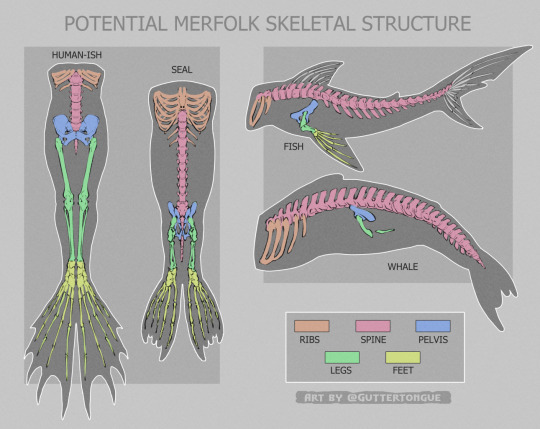
thinking about options for what the heck is going on in there
18K notes
·
View notes
Photo
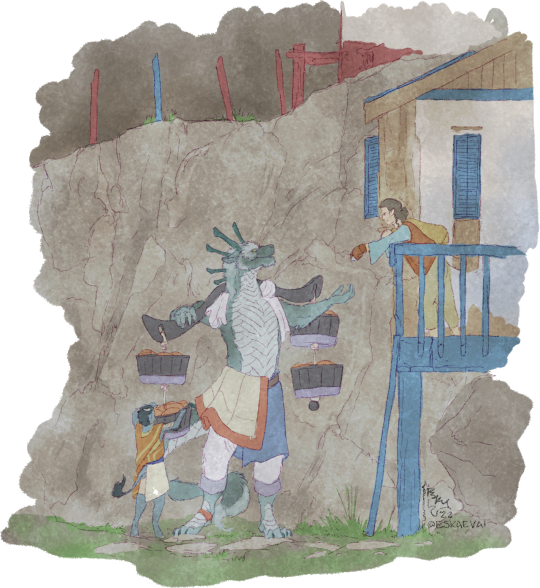
the fisherman and his son
10 notes
·
View notes
Note
What made you decide to have the three base species be Dragons, Unicorns, and Rocs? Additionally, what makes humans a neutral in between? Like, why are Reptiles, Birds, and Ungulates equally connected to a random primate species?
I picked the Dragons the Rocs and the Unicorns because it correlated neatly with the characters I’d designed for a setting I was working on at the time (a world called Cor Rizl which hasn’t come up here yet but will in the future) The first versions of the species chart were a three way venn diagram with some rough overlaps that simply became more complex and bloated over the course of three years.
Now, Lore Wise, the human form was picked, and picked rather arbitrarily in some aspects. One could even say that it was designed, curated for balance of traits and, more importantly, to foster and incentivize cooperation and civilization.
Was it successful in this? Debatable.
Originally the Pure Dragon, the Pure Roc, and the Pure Unicorn, three species at the most extreme points of the chart, were completely independent sapient species.
The dragons lived in the sea, the rocs in the sky, and the unicorns on the land. The original shrouding spell which made them all human permanently was set so that they could live together without the barriers that separated them.
As humans, they mingled with one another and all the points of the chart were created as the population mixed. And many ages later when that original spell finally broke down and true forms emerged again there was much much more variation.
5 notes
·
View notes
Photo

The Mages Circuits
I know tumblr despises wide images, and some people struggle with searchable text, so you can find the transcript below the cut:
The Mages Circuits are the regulatory and educational agencies of the spell casting world. Comprised of practitioners and academics, the seven circuits control licensure of active mages and (attempt to) ensure safe and ethical practice of magic. The circuits often approve contract work for its members ensuring that mages keep safe, well paying jobs and their clients receive skilled, quality work.
As a Divine Initiative, the Mages Circuits appear in the majority of universes in some manner or another. The Circuit is sometimes a government organization and sometimes independent, but most regions of significant casting population will likely have at least a joint circuit of some kind, even if every branch is not represented.
GOLD - Those who use their magic for healing and / or work with the body. This includes any application of magic in a medical setting as well as shapeshifting and some forms of necromancy. The Gold is among the more strict circuits.
SILVER - Those whose magic is applied in practical means. The Silver is the largest circuit (and often the least respected) This includes such applications as preservation, structural reinforcement, fire retardation, and other maintenance. Silver Mages are also called House Mages or Lantern Tenders.
PALE - Those whose magic is defensive or environmental, including weather watchers, terraformers, and barrier casters. Also called the Pearl, Platinum, or Iron Circuit, the Pale and the Silver often overlap.
STEEL - Those who use their magic for combat or other offense. The most well known and well storied of the circuits is comprised mostly of soldiers and mercenaries. The Steel is the favorite circuit of non casters and the least favorite of anyone else.
BRONZE - Those who use magic in delegation. Construct masters, programmers, and the majority of necromancers fall under this circuit. The Bronze is among the tighter circuits and heavily regulates its members’ activities.
BRASS - An offshoot of The Bronze which deals specifically with the combination of domanic and non domanic mechanisms in. The smallest and newest circuit, the technomancers are oft looked down upon.
GLASS - Those whose magic deals in the unseen. This includes diviners, mediums, exorcists, and truth seers. As one of the smaller circuits, The Glass is often combined with The Pale, with whom they work often.
The Casters' Amulet is a simple medal or button of the appropriate material or color framed with wood and worn by licensed magical practitioners. Style varies wildly by location and time period.
19 notes
·
View notes
Photo

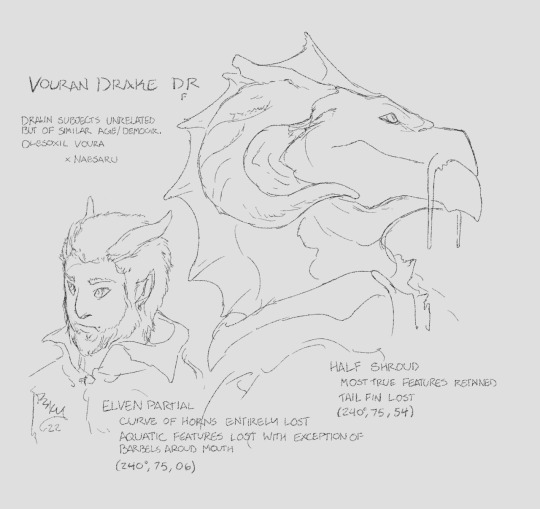
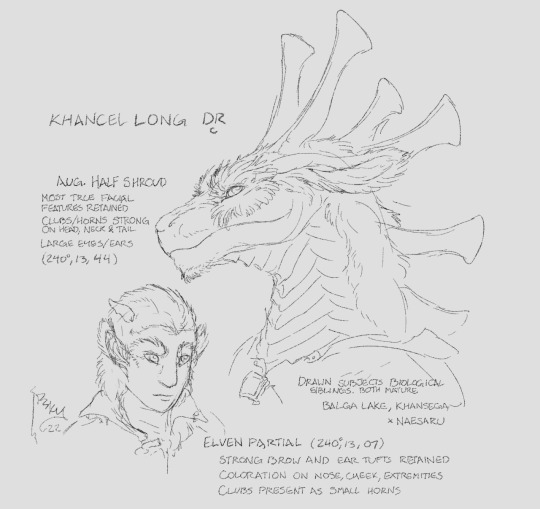
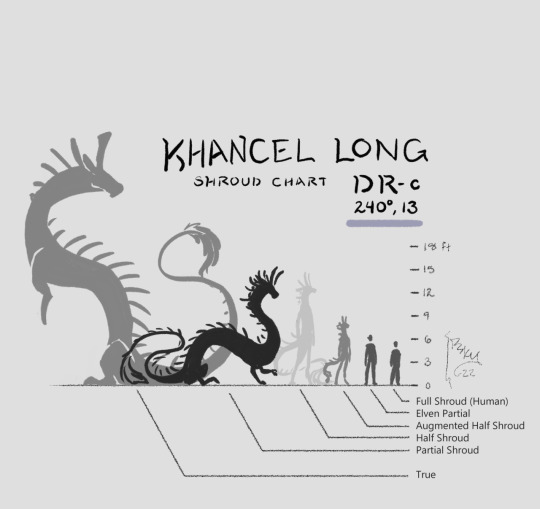
Shrouding Charts show the various presentations possible in a given species and which are most common. Shrouding is a smooth spectrum from a true presentation to a fully human one, but certain points along the way tend to be more common as they are more useful and easier to live in and maintain.
13 notes
·
View notes
Text
The Unicorns of Duaiune Part 3: The Favor Economy
Like all creatures, unicorns are born into a domain. An individual's domain varies depending on time and place of birth as well as ancestry, but the most common among them are Defense, Music, Rhythm, Knowledge, Memory, and Inversion.
Memory Magic is the most prized to hold. Spells of this domain are what allow much of unicorn society to function and those holding it are often trained for positions of authority among The Banners. Memory spells keep the nomads on track in their wanderings without use of maps, signage, or other tools, and allow distant herds to share information and ideas without contact. Further, memory magic drives the economy of favors.
Rather than dealing in any hard currency, unicorns trade goods and services between one another directly as Favors. Memory magic tracks debts of favor, ensuring that the entire banner is aware of an owed debt and socially pressures for repayment. Debts can be repaid through any service to the banner or its members. There is a cultural expectation of continued contribution to the whole which the system codifies and upholds.When dealing with humans, unicorns offer useful magical skills including artificing, enchantment, and quick long distance communication. They also provide information, news, rumors, companionship, and protection on long journeys, as well as procurement of items from afar. The Banners work as a group to fulfill these favors with a humbling efficiency, and, in exchange, expect favors in return. (sometimes with interest)
The details of transactions are remembered by The Banners as a whole, and any unicorn may call in that debt as they please. By the same right, one who is owed a favor may ask it of any unicorn they encounter and expect repayment.
Blank Coins are used as a courtesy for humans, marking the weight of a debt owed in a tangible way that is easier for them to keep track of. The featureless coins are spell bound and summonable for easy manipulation, and change hands both as a catalyst for the memory spell and as a reminder of the deal. Silver blanks represent a debt owed to the herds while coppers represent a credit.
By unicorn standards, nearly anything can be considered a favor. Because of this, many humans avoid speaking with them unless absolutely necessary, as something as simple as asking directions or being told a secret in passing may land them in debt.
Favor debt from human nations in exchange for enchantments and protections gives The Banners their unique diplomatic status status and grants them a number of political privileges which allow them to continue their way of life without worrying about border crossings or other restrictions.
#lore drop#my work#unicorns#Duaiune#Cor Taijune#worldbuilding#fantasy world building#unfortunately this one doesn't have an illustration :(
6 notes
·
View notes
Photo
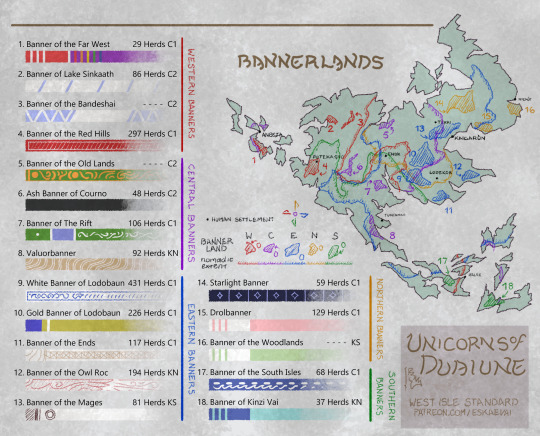
The Unicorns of Duaiune Part 2: The Banners
Unicorn herds organize themselves into eighteen Banners. Member herds of a given banner plan their nomadic routes together and communicate as they travel across the continent independently. Each banner's home land always has at least one member herd present.
Even though the unicorns are constantly moving. Members of a given banner can always be found at a fixed point. While the banner territory is usually very large, it features at least one known meeting place at which anyone wishing to address the banner as a whole may expect to do so. This is for diplomatic reasons, as the banners function much like governments when dealing with humans.
Generally, herds do not stray too distantly from these starting points. Over the course of a year, one heard may travel several thousand miles in circuit, but this is often not enough to traverse the entirety of the continent. All eighteen banners are considered diplomatically neutral and, through treaty, have freedom of travel through any and all territories among other benefits.
The banners themselves often mimic the colors of nearby human nations, or flaunt aspects of regional culture. They are a courtesy to non unicorns in marking meeting places and identifying the loyalties of herds as they pass through a given area.
There is no formal education within the banners beyond mage apprenticeships. Roughly two thirds of unicorns are at least partially illiterate. In herds with little contact with humans, this figure is more significant. The majority speak both Lodo and Cauhai. In the west Hcodai / West Isle Common is spoken as well.
On top of this, a simple writing system unique to The Banners is used for marking way posts, time keeping, and signatures.
13 notes
·
View notes